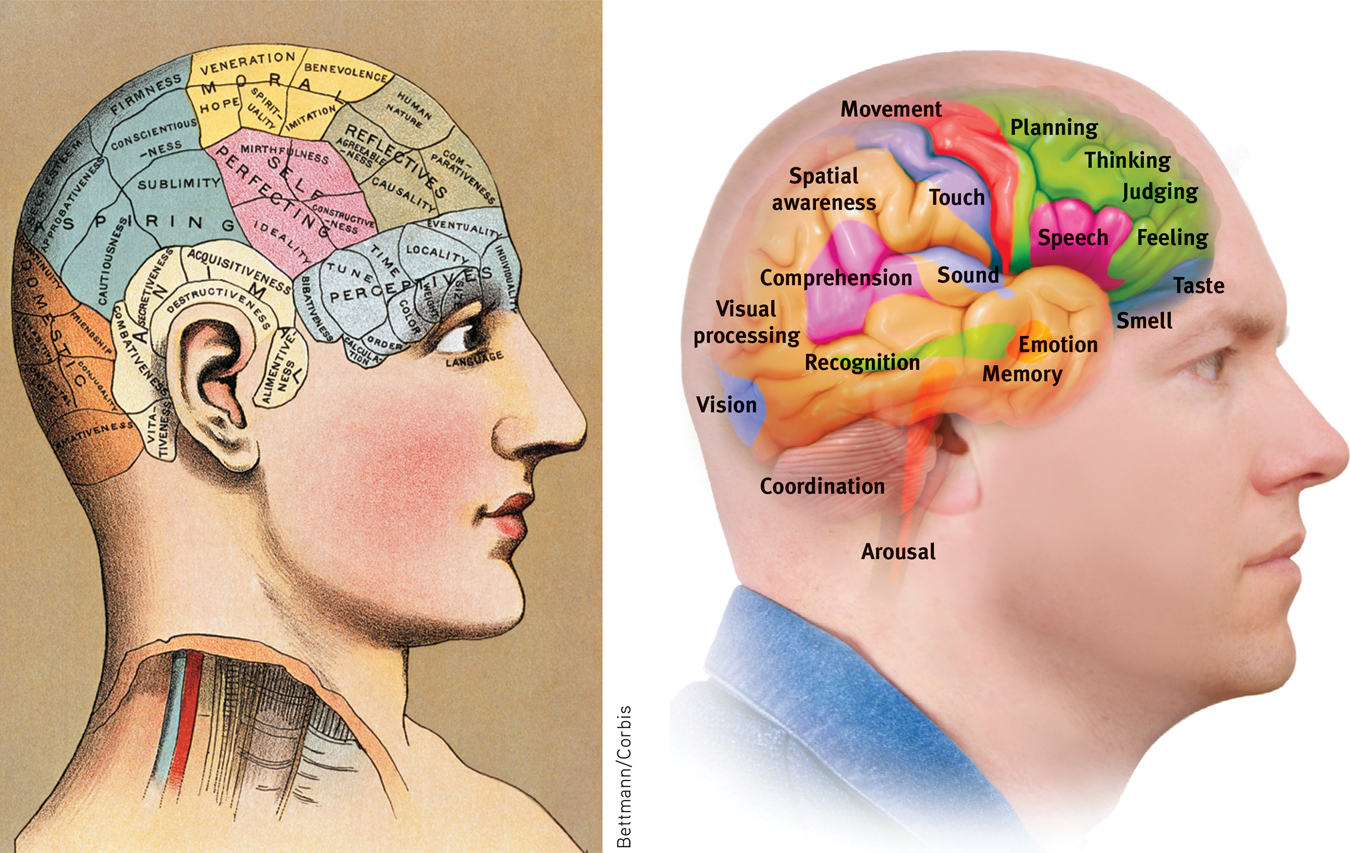5.1 Biology, Behavior, and Mind
5-
YOUR EVERY IDEA, EVERY MOOD, every urge is a biological happening. You love, laugh, and cry with your body. Without your body—
Our understanding of how the brain gives birth to the mind has come a long way. The ancient Greek philosopher Plato correctly located the mind in the spherical head—
In the early 1800s, German physician Franz Gall proposed that phrenology, studying bumps on the skull, could reveal a person’s mental abilities and character traits (FIGURE 5.1). At one point, Britain had 29 phrenological societies, and phrenologists traveled North America giving skull readings (Dean, 2012; Hunt, 1993). Using a false name, humorist Mark Twain put one famous phrenologist to the test. “He found a cavity [and] startled me by saying that that cavity represented the total absence of the sense of humor!” Three months later, Twain sat for a second reading, this time identifying himself. Now “the cavity was gone, and in its place was … the loftiest bump of humor he had ever encountered in his life-

 Figure 5.1
Figure 5.1A wrongheaded theory Despite initial acceptance of Franz Gall’s speculations (right), bumps on the skull tell us nothing about the brain’s underlying functions. Nevertheless, some of his assumptions have held true. Though they are not the functions Gall proposed, different parts of the brain do control different aspects of behavior (far right, from The Human Brain Book).
You and I are living in a time Gall could only dream about. By studying the links between biological activity and psychological events, those working from the biological perspective are announcing discoveries about the interplay of our biology and our behavior and mind at an exhilarating pace. Within little more than the past century, researchers seeking to understand the biology of the mind have discovered that
- among the body’s cells are nerve cells that conduct electricity and “talk” to one another by sending chemical messages across a tiny gap that separates them.
- specific brain systems serve specific functions (though not the functions Gall supposed).
- we integrate information processed in these different brain systems to construct our experience of sights and sounds, meanings and memories, pain and passion.
- our adaptive brain is wired by our experience.
We have also realized that we are each a system composed of subsystems that are in turn composed of even smaller subsystems. Tiny cells organize to form body organs. These organs form larger systems for digestion, circulation, and information processing. And those systems are part of an even larger system—
RETRIEVAL PRACTICE
- What do phrenology and psychology’s biological perspective have in common?
They share a focus on the links between the brain and behavior. Phrenology faded because it had no scientific basis—